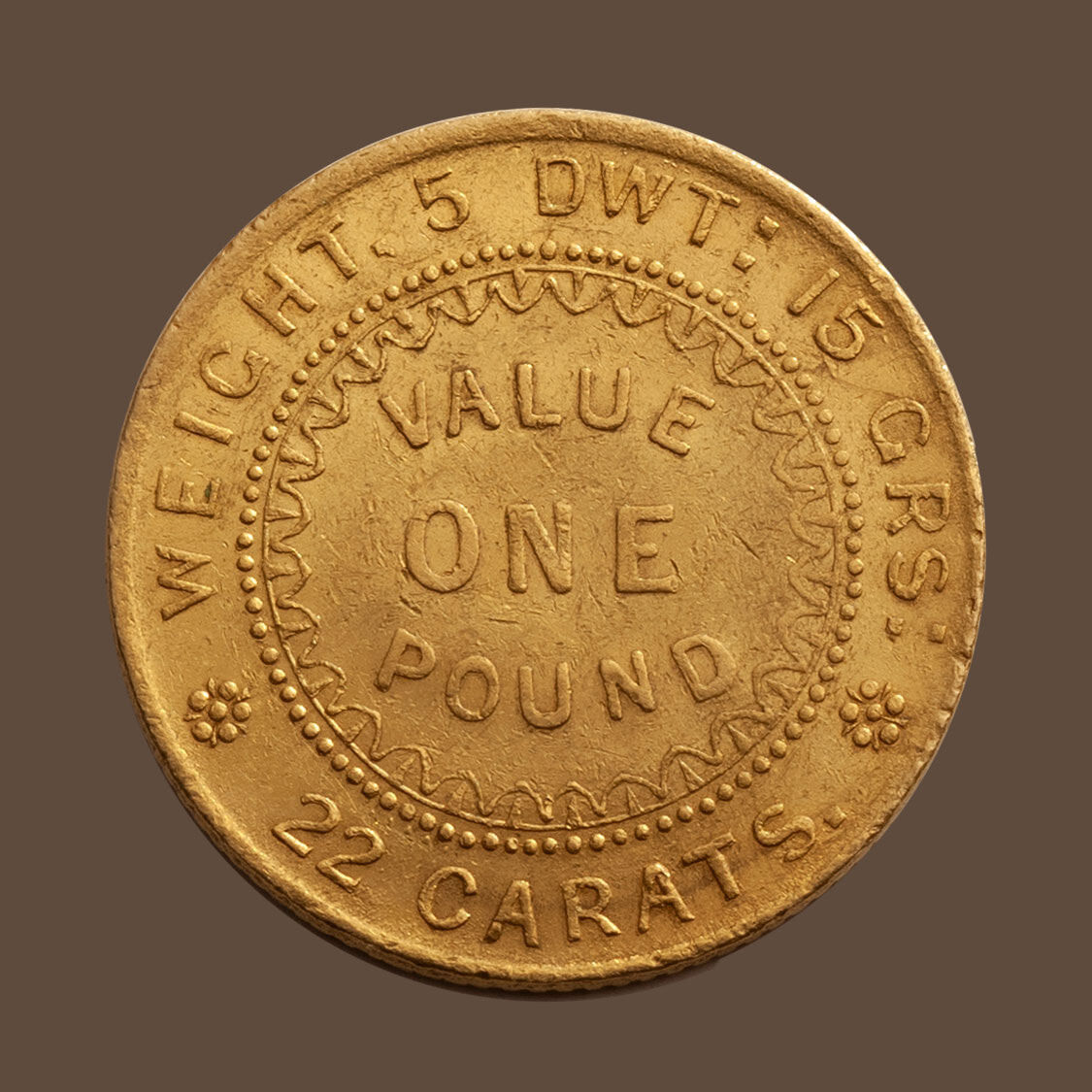1852 Adelaide Assay Office Gold One Pound struck with the second reverse die (Type II)



An 1852 Adelaide Pound that has defied the odds. good design details and none of the knocks and gouges you might expect from a coin that has circulated.

An attractive and very affordable example of the nation's first gold coin, the 1852 Adelaide Pound. struck using the second die.
The 1852 Adelaide Pound holds a very special place in Australia's history as the nation's first gold coin.
The coin is a classic Australian numismatic rarity, as is the 1813 Holey Dollar and 1813 Dump.
Its status as Australia’s first gold coin ensures that it will always be sought after and strengthens its investment value. Its investment value is also enhanced by its rarity for we estimate that perhaps 250 examples are available to collectors, across all quality levels, from the worst to the very best.
While there may be a natural assumption that special care and attention would have been applied during the minting process of the Adelaide Pound. This was certainly NOT the case.
The Adelaide Assay Office was opened one hundred and sixty-nine years ago as a refinery to strike gold ingots.
Except for ensuring the accuracy of the weight and purity of gold in the Adelaide Pound, there was minimal care regarding the overall striking and its eye appeal.
The coins were hammered out and hurled down an assembly line, more than likely into a barrel or bucket.
The Adelaide Pounds were to be used as currency, traded in commerce. Not preserved as collectables. And, as gold is a relatively soft metal, the rigours of circulation have treated most Adelaide Pounds harshly.
We also know from historical records, the striking of the Adelaide Pound was fraught with problems. During the first run of coins, the reverse die cracked.
A second die was used, with a different design, and to minimise the risk of further cracking, the pressure was reduced.
While the reduced pressure extended the life of the dies, it created its own set of problems in the execution of the design detail.
The very reason why we always consider the strength of the strike as well as the grading level and aesthetics of the 1852 Adelaide Pound when making our assessment. As we have done with this coin.
© Copyright: Coinworks
